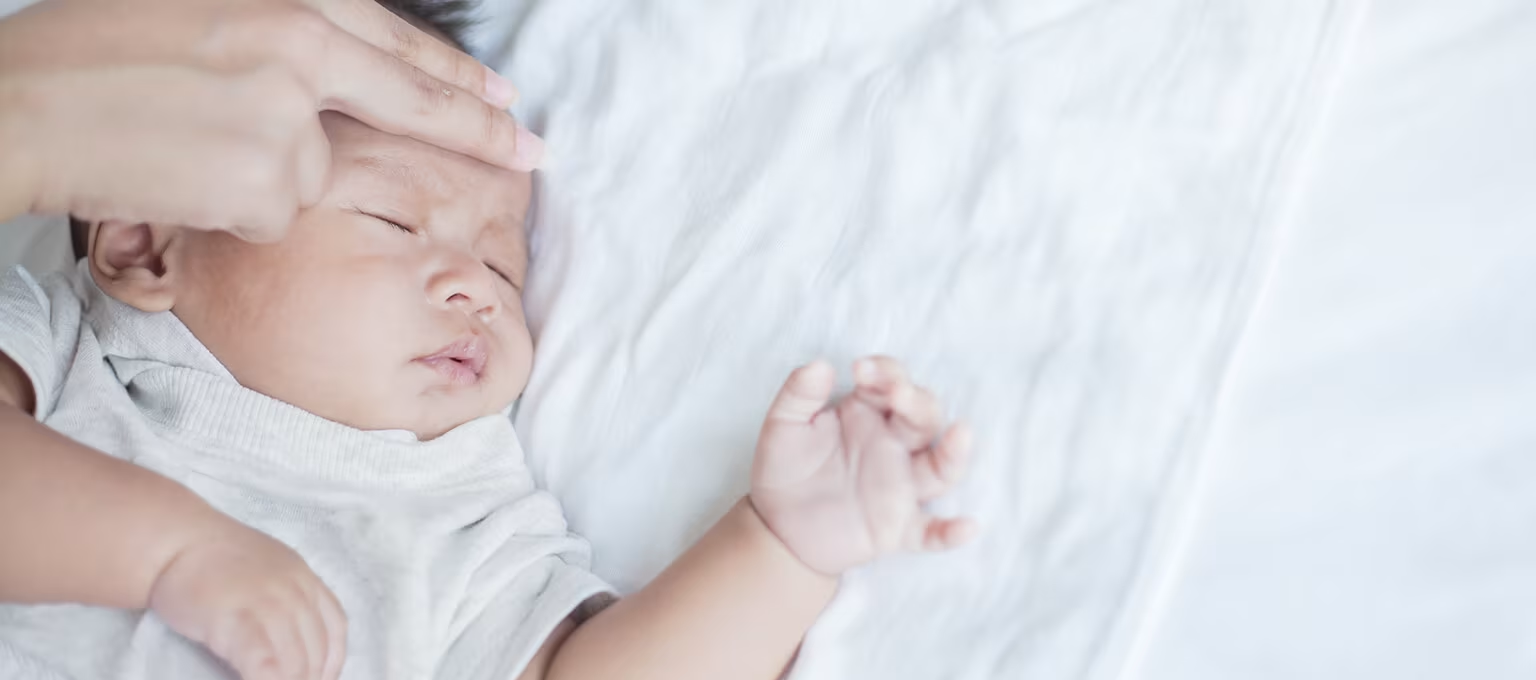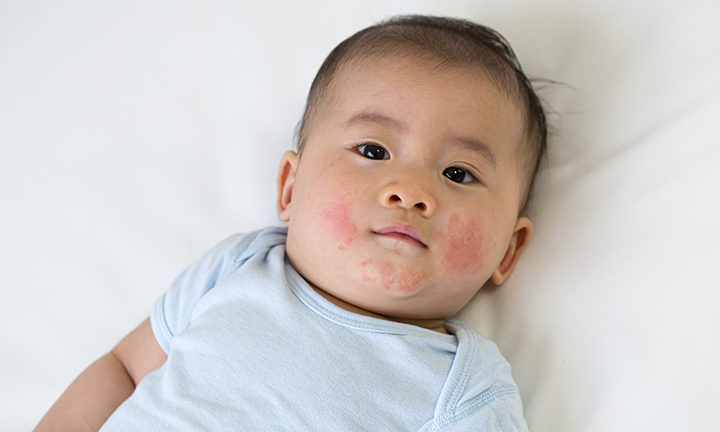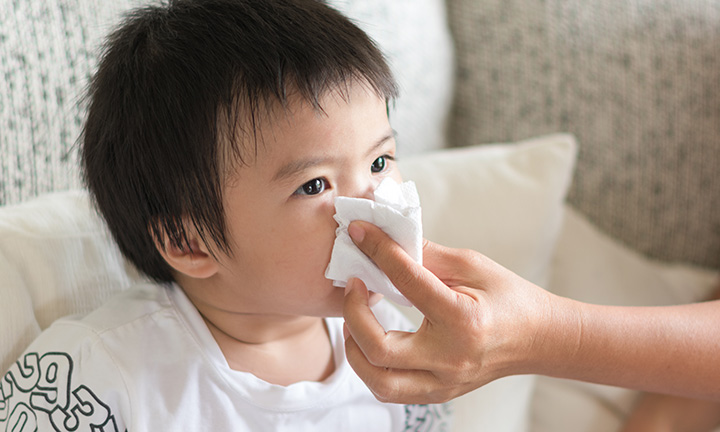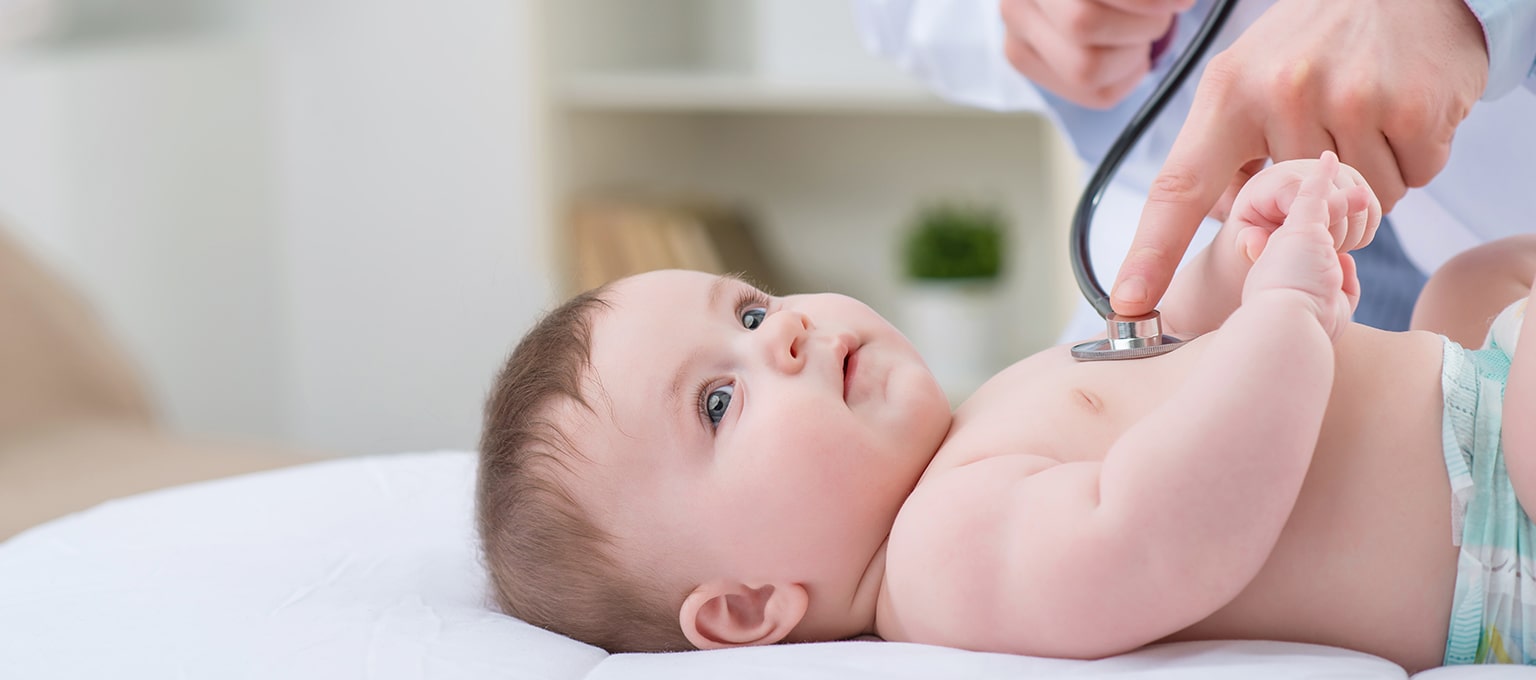
Whooping Cough in Babies
You might think that whooping cough is one of those childhood illnesses that were eradicated decades ago. While it’s true that vaccines have helped a lot in bringing it under control, and it’s now very rare for a child in the UK to catch it, the disease does still exist.
Luckily, we now have vaccines that can help prevent the whooping cough infection. Babies under 6 months of age, who haven’t yet had all their immunisations are the most at-risk group. Even then, there’s a lot you can do to help keep your child safe from infection.
Read on to find out what whooping cough is, how to recognise the symptoms in your baby, what kinds of treatment are available and what you can do to protect your little one.
What Is Whooping Cough?
Whooping cough, also known as pertussis or the ‘100-day cough’, is a bacterial infection of the respiratory system that is caused by the Bordetella pertussis bacteria.
The illness gets its name from the ‘whooping’ sound that you sometimes – but not always – hear between coughs. This sound is actually a gasp for breath.
The upper respiratory system is lined with cilia, which are like tiny hairs that constantly move in a wave-like pattern to ‘sweep’ dirt or debris out of the lungs and airways.
If your little one gets whooping cough, the pertussis bacteria attach to the cilia and stop them from moving. This, in turn, causes intense coughing fits, as your baby’s body tries to clear the lungs of mucus without the help of the cilia.
Although people of any age can get pertussis, it’s can be the most serious in babies under 12 months of age, as they may have a higher risk of complications.
Also, it can sometimes be harder to detect the illness in small babies because they don’t always make the whooping sound between coughs.
Instead, if your baby has whooping cough, he or she may get a symptom called apnoea – a pause in the normal breathing pattern that can make it a struggle to breathe.
About half of infants who get whooping cough need to be hospitalised because of the risk of complications. Try not to let this statistic frighten you – there are effective ways of protecting against the infection and treating it.
It’s good to know that by understanding this condition, keeping an eye out for it and – above all – immunising against it, you’ll be able to keep the risks to a minimum.
Whooping Cough Vaccine for Babies and Children
The best prevention and protection against whooping cough is vaccination. You’ll be offered this protection for your little one as part of the ‘6-in-1 vaccine’ (which also gives your baby immunity against diphtheria, hepatitis B, polio, tetanus and the bacterial infection Hib).
The 6-in-1 vaccine is given in 3 doses. Your baby will be offered this vaccine at 8 weeks, 12 weeks and 16 weeks of age.
The vaccine doesn’t usually have any serious side effects, but your baby may get a bit grumpy after the jab, and you might notice redness or swelling around the injection site. This soon goes away.
Later, at up to 3 years and 4 months of age, your child will be offered the vaccine again, this time as part of the ‘4-in-1 pre-school booster’. Besides whooping cough, this jab also boosts immunity against tetanus, diphtheria and polio.
The protection your child gets from the vaccine won’t last forever, as the immunity to whooping cough wears off after a time. What’s important, though, is that it helps prevent your newborn from catching whooping cough in the early stages of life, when it can potentially be more serious than in adulthood.
Whooping Cough Vaccine During Pregnancy
If you’re pregnant your midwife or doctor may advise you to get the whooping cough vaccine sometime between 16 weeks and 32 weeks of pregnancy.
This will protect your baby from whooping cough immediately after birth, as the antibodies that you create in response to the vaccine will be passed on to your little one before he or she is born.
This immunity can last until your baby is old enough to be vaccinated against the disease at around two months old.
Whooping Cough Symptoms
The symptoms of whooping cough appear between 2 and 20 days after the initial infection, and they can be grouped into three main stages:
The First Stage
The Second Stage
The Third Stage
What to Do If You Suspect Your Baby Has Whooping Cough
If you suspect whooping cough – even if you aren’t sure – take your baby to the doctor as soon as possible, because your doctor is the only one who can make a diagnosis.
Early detection of whooping cough is crucial because treatment with antibiotics can reduce the severity of symptoms if it’s started soon enough.
This means starting treatment within three weeks of your baby first becoming infected at the latest, and preferably before the coughing starts.
Antibiotics and a dose of whooping cough vaccine may also be offered to other people in your household, to protect them and stop infection spreading.
Call your doctor if you think your baby or someone in your immediate family has come into contact with someone who is infected, or if your baby has any of these symptoms:
There is a higher risk of complications associated with whooping cough if your baby is under 6 months old, so your baby’s doctor may recommend hospitalisation as a precaution to lower your little one’s risk of
If your baby does get admitted to hospital due to whooping cough, try not to worry. Your baby will be in good hands and will receive all the treatment needed to promote a speedy recovery.
Treating Whooping Cough at Home
If your doctor decides the whooping cough can be treated at home, be sure to give your baby all the medicines as prescribed, and always follow your doctor’s instructions.
As with all children’s illnesses, when recovering it’s important to make sure your baby gets lots of rest and drinks plenty of fluids to stay hydrated.
Also take care to remove and clean away any mucus or sick from your baby’s mouth.
Ask your doctor about pain relief for your child. Cough medicines aren’t advised as they’re not usually suitable for babies, and probably won’t help with whooping cough anyway.
How Does Whooping Cough Spread?
The pertussis bacteria can be found in saliva and mucus, so whooping cough can spread when any infected person coughs, sneezes or even laughs.
If you can, hold a tissue in front of your baby’s mouth and nose to catch germs whenever he or she coughs or sneezes. Always dispose of used tissues immediately.
If someone in your home has whooping cough, wash your baby’s hands regularly, and make sure that everyone else in the household washes their hands too.
The infectious period for whooping cough – when a person can give it to someone else – starts about six days after getting infected, when they start to show cold-like symptoms. It lasts for around three weeks after the coughing fits start.
Treatment with antibiotics can help shorten the infectious period.
Other people in your home may also be offered antibiotics and a vaccine to protect them from catching the whooping cough.
FREQUENTLY ASKED QUESTIONS
• First stage. Symptoms are similar to those of the common cold.
• Second stage. Cough with a whooping sound and other symptoms such as vomiting, a mild fever and exhaustion.
• Third stage. Slow recovery as coughing fits become less frequent and milder.
Whooping cough isn’t something to take lightly, but it can be prevented if both you and your baby are vaccinated according to your child’s routine vaccination schedule.
If your little one does catch the disease, treatment with antibiotics can help reduce the symptoms and speed up recovery, but simply following the vaccination schedule will give you lots of peace of mind and help ensure your baby’s happy and healthy development.
How we wrote this article
The information in this article is based on the expert advice found in trusted medical and government sources, such as the National Health Service (NHS). You can find a full list of sources used for this article below. The content on this page should not replace professional medical advice. Always consult medical professionals for full diagnosis and treatment.
Read more about Baby
Related Articles
Join Pampers Club and get:














